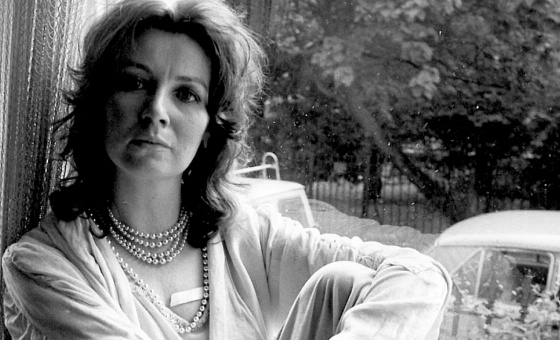This is the last article you can read this month
You can read more article this month
You can read more articles this month
Sorry your limit is up for this month
Reset on:
Please help support the Morning Star by subscribing here
You don't hear much about Wakefield. The rugby team, Trinity, haven't won much since the early '60s. Their old Belle Vue ground formed the backdrop to that cracking film This Sporting Life, probably the best sports film ever made.
Now, however, Wakefield has at last got something to cheer about. It is undergoing a cultural renaissance.
It began with the opening of the contemporary art gallery, the Hepworth. The name is taken from one of the city's most famous daughters, Barbara Hepworth, that giant of post-war sculpture. That may come as a surprise unless you know that Wakefield is home to the iconic Yorkshire sculpture park.
Opened in 1977, its 500 acres of open-air galleries include works by both Hepworth and that other great Yorkshire sculptor, Henry Moore.
The renaissance continued with the opening of Wakefield One the new council emporium which included a new library opened by Jarvis Cocker in 2012 and a new museum opened by David Attenborough in 2013.
Personally I preferred the old museum building and I don't like the way the council talks about the citizens of this great Yorkshire city as customers, but, hey, a new library at a time of austerity cannot be a bad thing.
Another well-known Wakefield landmark is the category-A prison which is the home of some of Britain's most dangerous criminals. However, being a prison officer does not necessarily mean that you are conservative.
Wakefield's officers have a very radical past as they were responsible for founding the Wakefield Industrial Co-operative Society back in 1867.
The society grew quickly and by the turn of the 20th century was ready to expand its central premises. Following a design competition, Abraham Heart of Wakefield won with his vision of Unity, an intriguing mixture of gothic and Flemish architecture. The extension took three years to build and included a magnificent hall.
I am sure that an architectural critic would tell us that this building is a jumble of styles full of ornate craftsmanship, glorious stained glass and chock full of co-operative symbolism. This building should not work but somehow it does.
Sadly in recent times a place for everything from silent movies, to wrestling, symphony orchestras to ballroom dancing was in a terrible state of repair. The venue for so much of Wakefield life looked like it would go the same way as the Wakefield Co-op Society.
That is why I am so pleased that the icing on the cake of this cultural rebirth is that of Unity Hall.
Forty years after the Wakefield Co-op disappeared, the building was taken over by the local authority but only partially used. Then in 1994 the council sold the building, then for a few years it was used as a place for music students to hone their skills.
It was still a music venue during the late 1970s and early 1980s - it attracted some of the biggest acts in the glam, punk, post-punk and heavy metal era. The Specials, Boomtown Rats, Human League, The Skids, The Only Ones, Iron Maiden, Penetration, Eurythmics and Def Leppard had all strutted their stuff at Unity Hall.
Its claim to fame is as the first place The Pretenders ever played in 1978 supporting Wakefield power-pop band Strangeways - one for the rock history books.
Fans who had loved these gigs and the venue, seeing the state it was in, began to try to save it.
It was a man called Chris Hall who turned these aspirations into a serious project. He was a consultant on property developments but realised that there needed to be a new way of developing cultural businesses through co-operatives.
He started working on Unity Works - the name for the redevelopment project in 2010 - and created the co-op that could deliver what everyone wanted the following year and became its development director and chairman.
Since 2011 when a Community Benefit Co-op was established - with membership/shares at £200 each - it worked in partnership with the city council putting together a £4.4 million scheme to completely refurbish the hall.
It has worked and they have done a magnificent job.
The venue is amazing with a 600-seater major hall and 150-seater minor hall.
The renovation has uncovered many original features such as floor mosaics, the incredible roof in the main concert room and even an original lift sign.
As well as a terrific concert venue, it has office space, an art gallery, independent retail space and conference facilities. The work is not quite complete. Phase two will see a bar and cafe open this month.
Last month the Year Zero festival saw the Damned return to the stage of Unity for the first time since 1981.
This old venue is better than ever and very much alive and kicking. And here is one for all our diaries - Remembering the Miners' Strike, a day-long national event supported by the Orgreave Truth and Justice Campaign and the NUM will be held at Unity Works on March 7 2015.
This building now looks great - a combination of the best of the old and the new and it has made this old co-operator very happy that an iconic co-op building has been co-operatively saved and put into co-operative use.





